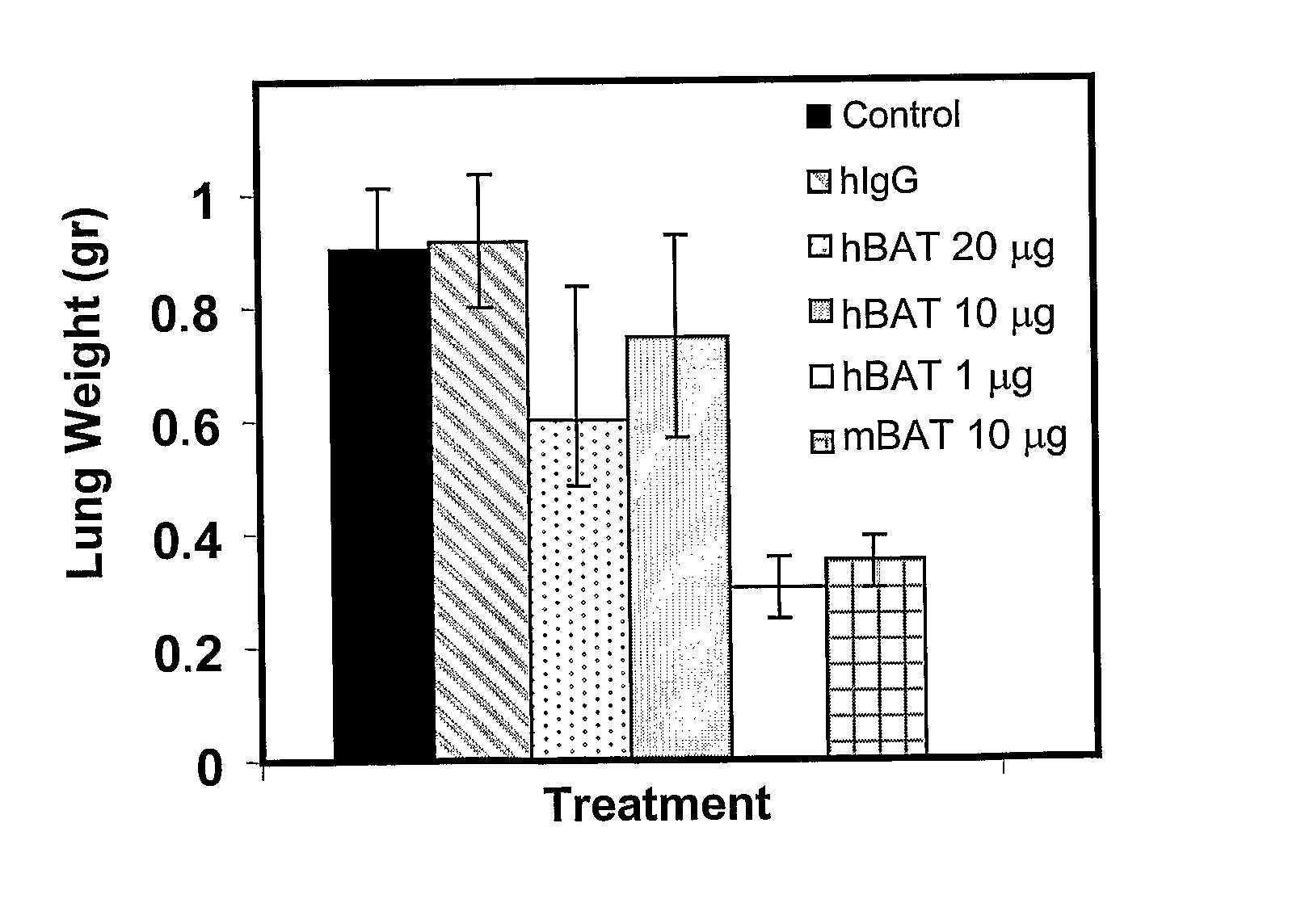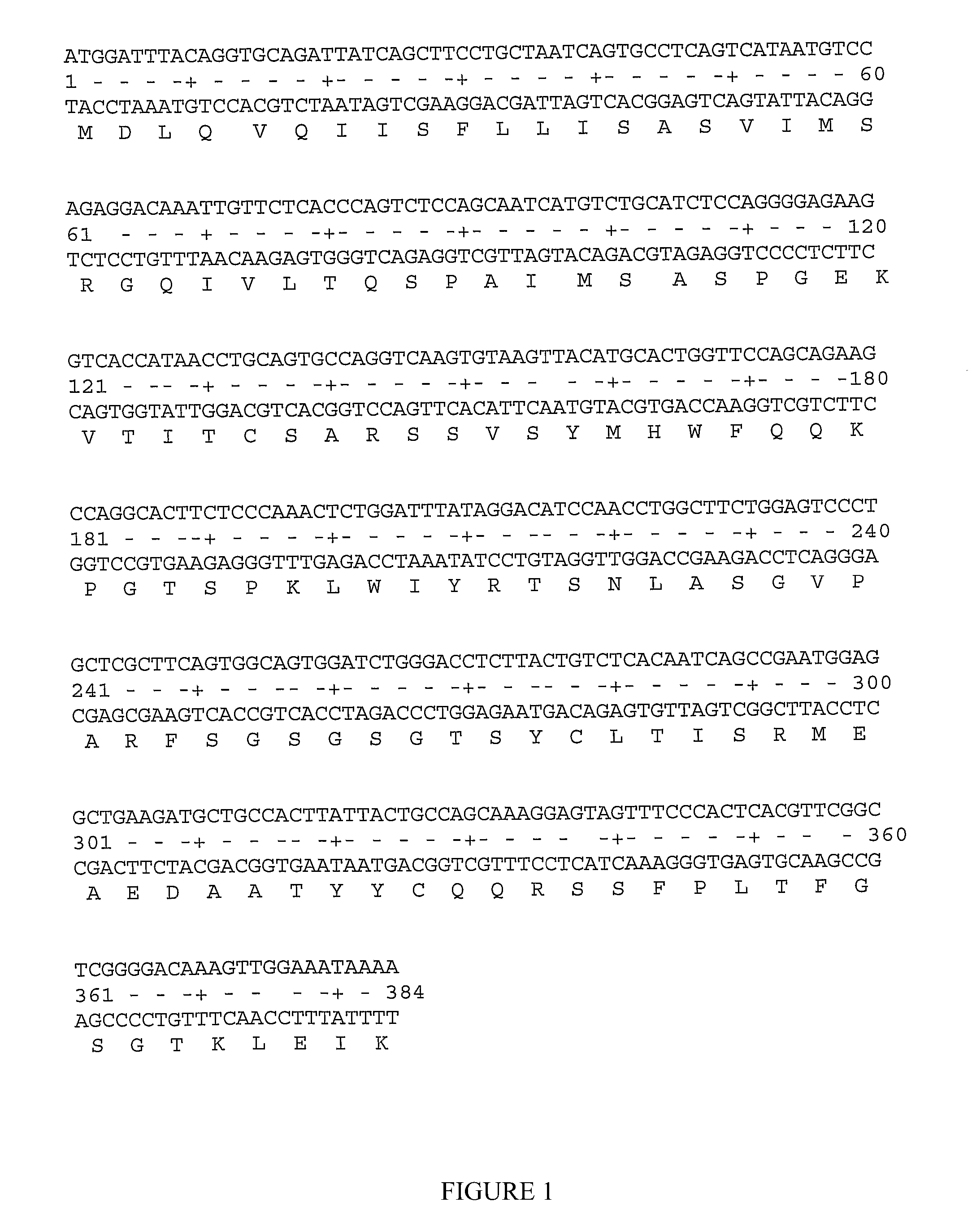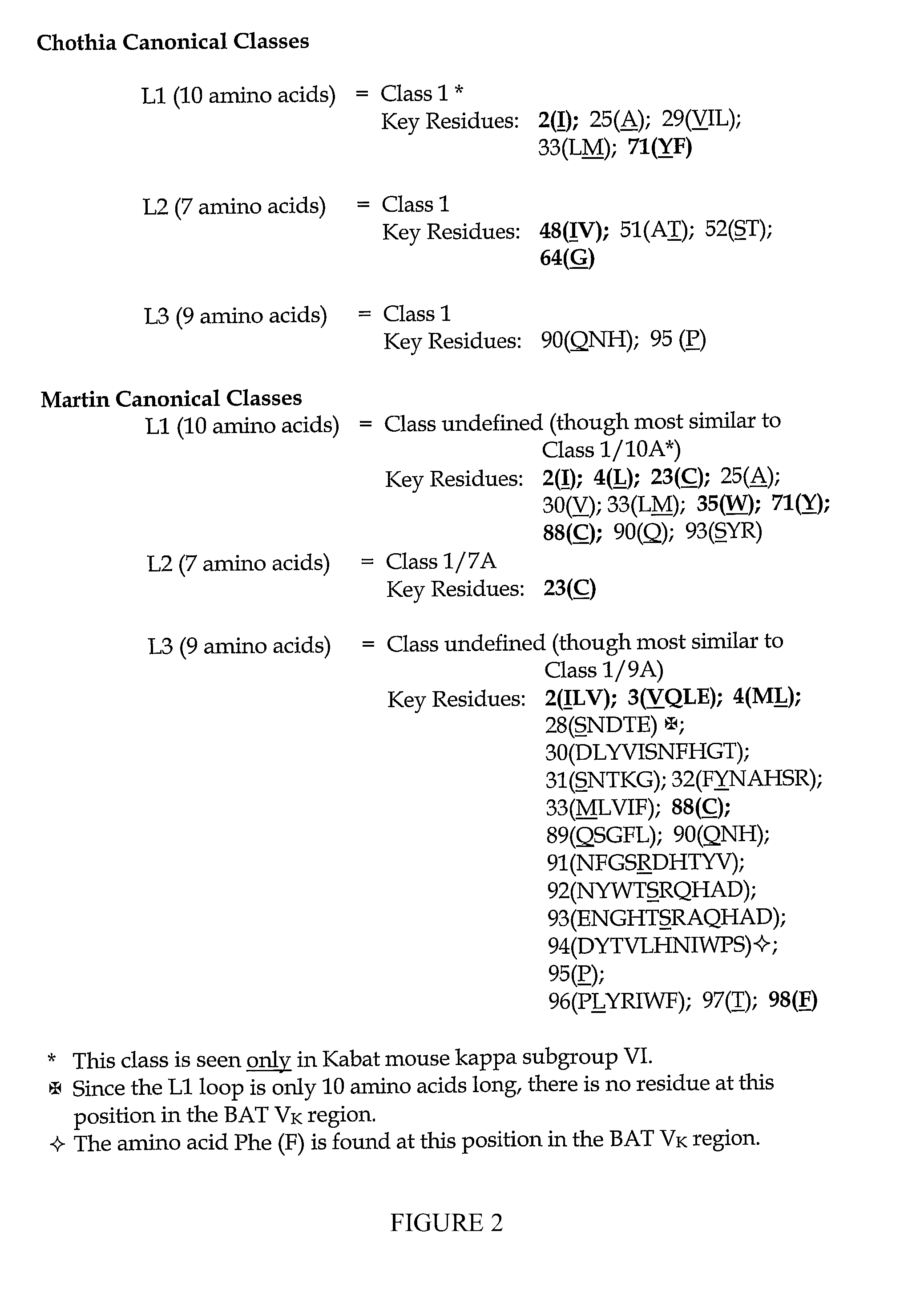Humanized immunomodulatory monoclonal antibodies for the treatment of neoplastic disease or immunodeficiency
a monoclonal antibody and neoplastic disease technology, applied in the field of immunotherapy, can solve the problems of insufficient tools and comprehensive description for carrying out the synthesis of altered antibodies, cancer in its different forms is a major cause of death in humans, etc., and achieve the effect of induration in proliferation and activation
- Summary
- Abstract
- Description
- Claims
- Application Information
AI Technical Summary
Benefits of technology
Problems solved by technology
Method used
Image
Examples
example 1
Sequence Analysis of the Mouse BAT-1 Kappa Light Chain Variable Region (Vκ)
[0189] The DNA and amino acid sequences of the BAT-1 Vκ region is shown in FIG. 1. The amino acid sequences were compared with other mouse variable regions and also with the consensus sequences of the subgroups that the variable regions were subdivided into in the Kabat database (Kabat et al., ibid). From this analysis the BAT-1 Vκ region was found to most closely match the consensus sequences of both mouse kappa subgroup IV (Identity=88.38%; Similarity=92.45) and mouse kappa subgroup VI (Identity=87.74%; Similarity=89.62). When only the FRs of the BAT-1 kappa light chain variable region (i.e. without the amino acids in the CDRs) were compared to mouse subgroups IV and VI, percentage identity increased to exactly 90.00% for both, while percentage similarity rose to 92.50%, again for both consensus sequences. However, despite the close similarities to both Kabat subgroups, it was decided that the murine BAT-1...
example 2
Sequence analysis of the mouse BAT-1 heavy chain variable region
[0192] The DNA and amino acid sequences of the BAT-1 VH region is shown in FIG. 3. An analysis similar to that given in Example 1 was conducted for the BAT-1 VH region which determined that it exhibited the closest match to the consensus sequence of the mouse heavy chain miscellaneous subgroup in the Kabat database (Kabat et al., ibid). Identity between the mouse heavy chain variable region amino acid sequence of mBAT-1 and the consensus sequences of the miscellaneous subgroup was measured at 60.64% while the similarity was calculated to be 69.23%, with the next closest Kabat subgroup consensus sequences being subgroup IIa (Identity=59.83%; Similarity=66.67%). However, when only the FRs of the BAT-1 VH region was compared to mouse subgroup IIa, percentage identity decreased to 54.02% while the similarity dropped to 62.06%. Conversely, the same comparisons carried out against the mouse miscellaneous subgroup found the F...
example 3
Design of the Humanized BAT-1 Vκ Antibody Variants
[0196] The first step in the design of the humanized variable regions of the BAT-1 antibody was the selection of the human kappa light chain variable region that would serve as the basis of the humanized BAT-1 VK region. As an aid to this process the BAT-1 VK region was initially compared to the consensus sequences of the four human kappa light chain variable region subgroups as defined by Kabat and his coworkers (Kabat et al., ibid).
[0197] The mouse BAT-1 light chain variable region was most similar to the consensus sequences of human kappa light chain subgroup I and human kappa light chain subgroup III. In the case of human kappa light chain subgroup I the mouse BAT-1 VK region displayed a 63.21% identity over the whole variable region and a 70.00% identity within the FRs alone. When measured with respect to similarity, these values increased to 71.70% overall and 80.00% within the FRs alone. In the case of human kappa light chai...
PUM
| Property | Measurement | Unit |
|---|---|---|
| molecular weight | aaaaa | aaaaa |
| pH | aaaaa | aaaaa |
| molar ratio | aaaaa | aaaaa |
Abstract
Description
Claims
Application Information
 Login to View More
Login to View More - R&D
- Intellectual Property
- Life Sciences
- Materials
- Tech Scout
- Unparalleled Data Quality
- Higher Quality Content
- 60% Fewer Hallucinations
Browse by: Latest US Patents, China's latest patents, Technical Efficacy Thesaurus, Application Domain, Technology Topic, Popular Technical Reports.
© 2025 PatSnap. All rights reserved.Legal|Privacy policy|Modern Slavery Act Transparency Statement|Sitemap|About US| Contact US: help@patsnap.com



